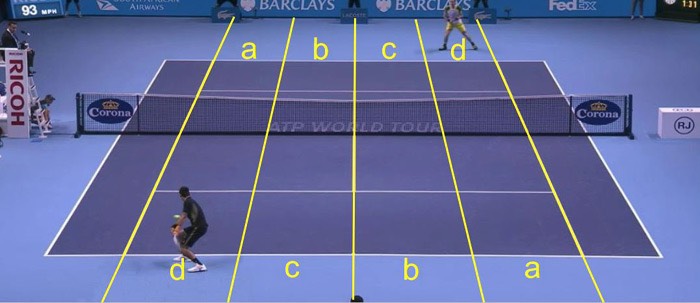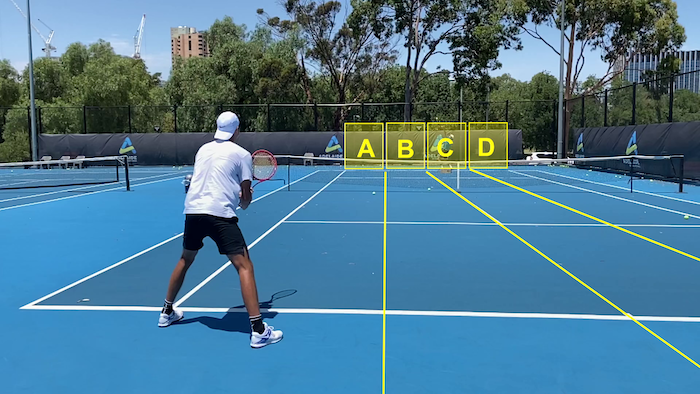G’day,
You are returning serve and you need a plan to start the point. Some factors to consider are:
- Is your opponent hitting a first or second serve?
- What’s the point score?
- Does the moment call for being aggressive or be patient and build?
- Where does your opponent expect you to return?
- Where is your opponent’s Serve +1 weakness?
- Is it time to stick to the game plan or surprise?
The 25 Golden Rules of Singles Strategy outlines eight specific factors that the server should consider before hitting a first or second serve. It’s actually Rule #2.
As the returner, the first thing you need to decide is where to direct your return.
Typically you are going to go right down the middle of the court to Position B or C. Most returns go to C, attacking the right-handed opponent’s Serve +1 backhand. It’s a good idea, but attacking B works a treat as well as a lot of players either don’t defend well with their forehand and/or you can rush their big forehand backswing right after the serve.
Here’s how the court is cut up into the four areas of ABCD.

January 15, 2020 – Adelaide, Australia.
I was on the coaching team of Alexei Popyrin and Jan-Lennard Struff to kick off 2020. The video below is a short clip from Alexei’s practice in Adelaide in January. Look at the pic below with the ABCD locations. Imagine seeing the court like this. There is a great benefit to having a specific plan for the first two shots of a rally.
Alexei Popyrin – Adelaide practice, January 2020
How to visualize ABCD when returning.


Slow-Motion Video – Return to B then attack to A.
Real-Time Video – Return to B then attack to A.
Knowing ABCD is key. Why? Because the baseline is a big area. It’s 27 feet across (8.2m). Creating four locations helps to pinpoint specific forehand and backhand targets to attack. It makes the game plan more accurate and helps to minimize risk.
Try adding the “B-A” return pattern to your own game!
Best,
Craig



